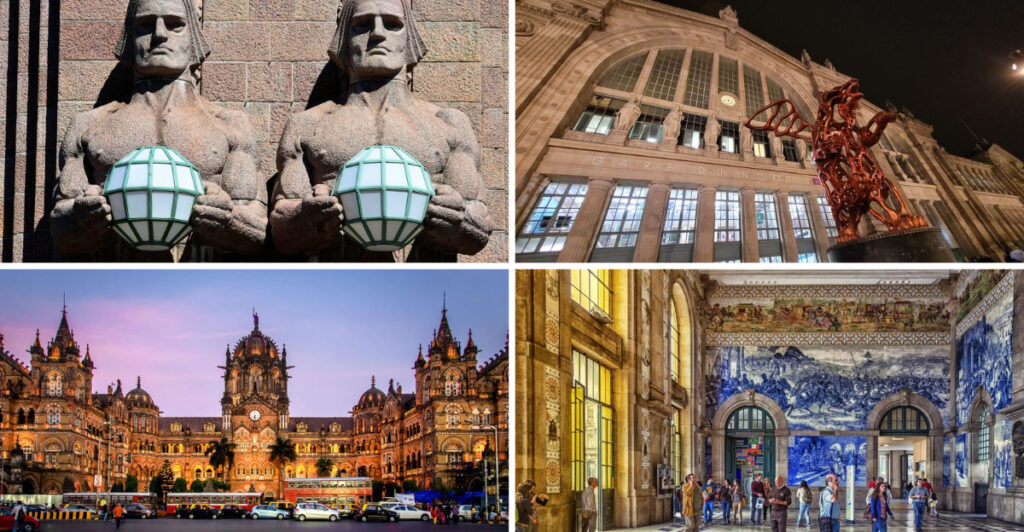Train stations are often more than mere transit points; they are gateways to adventures, memories, and stories untold. Around the world, some train stations capture the essence of art, culture, and history in their architecture and ambiance. These are the places where waiting becomes a pleasure, and missing a train might just be an opportunity. Here are 20 of the world’s most beautiful train stations that invite you to pause, admire, and get lost in their splendor.
1. Grand Central Terminal, New York, USA
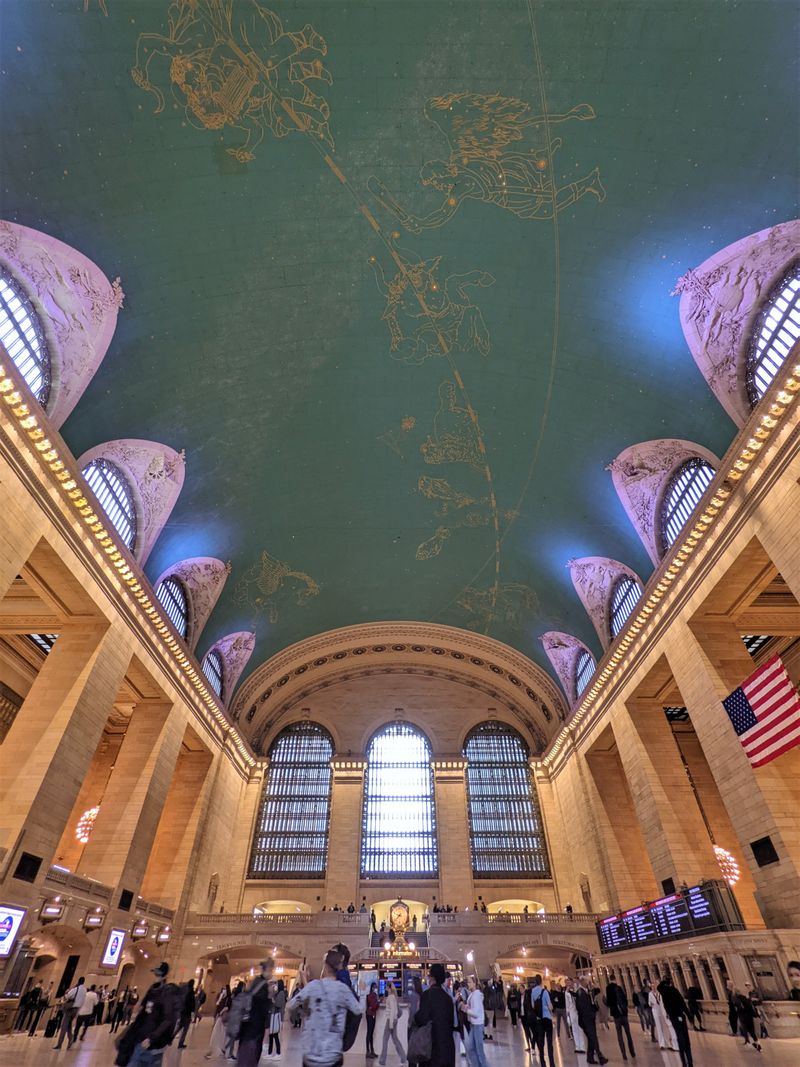
In the heart of New York City, Grand Central Terminal is not just a transportation hub but a marvel of architectural elegance. The celestial ceiling, adorned with constellations, is a sight to behold. Many travelers find themselves gazing upwards, captivated by its beauty.
This terminal is more than just a station; it’s an experience filled with history and charm. The whispers of conversations and the rhythm of footsteps echo the stories of countless journeys. A marvel of engineering, it stands as a testament to human creativity.
Visiting Grand Central feels like stepping into a grand era, where every detail tells a story.
2. St. Pancras International, London, UK
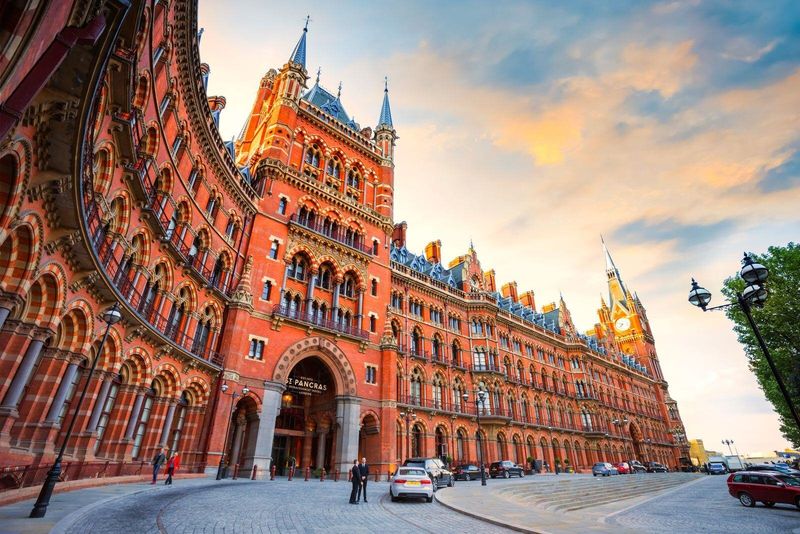
St. Pancras International, an architectural jewel in London, blends Victorian Gothic grandeur with modern functionality. The station’s red-brick facade and majestic clock tower greet travelers with a sense of history and elegance.
Inside, the high-arched roof and intricate ironwork create a sense of openness and wonder. It’s a place where the old meets the new, making every journey feel special.
Whether you’re catching a train to Paris or simply passing through, the atmosphere is one of timeless sophistication and charm, inviting you to linger a little longer.
3. Chhatrapati Shivaji Terminus, Mumbai, India
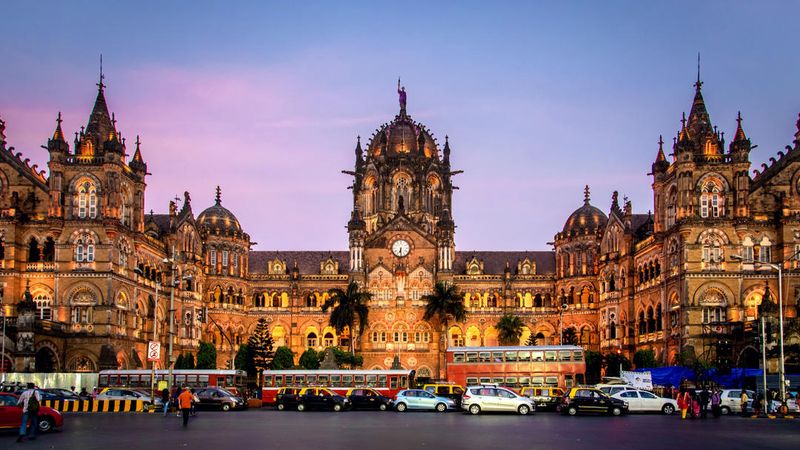
A UNESCO World Heritage site, Chhatrapati Shivaji Terminus in Mumbai is an epitome of Victorian Gothic architecture in India. Its detailed stone carvings and majestic dome are an artist’s delight.
By day, the station buzzes with life, as thousands pass through its gates. By night, it’s a glowing masterpiece, with lights highlighting every ornate corner.
This station tells a story of colonial India, blending Indian and British architectural styles. It’s a place where history lives on, and every visit feels like a step back in time.
4. Antwerp Central Station, Antwerp, Belgium
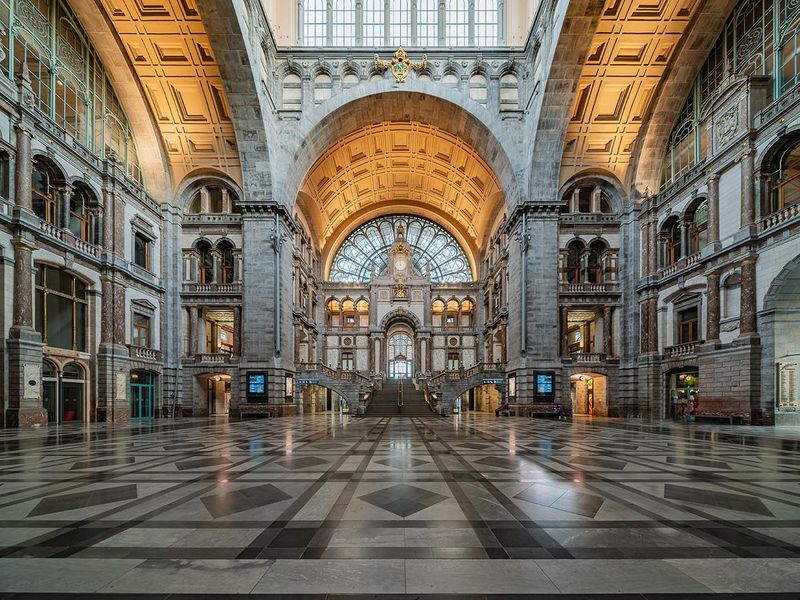
Often dubbed the ‘Railway Cathedral,’ Antwerp Central Station is a blend of architectural styles, from Baroque to Art Nouveau. Its grand hall is adorned with marble floors and an elegant clock that watches over the travelers.
As you traverse its platforms, the blend of old-world charm and modern convenience becomes apparent. The station’s beauty lies in its attention to detail, where each corner offers something unique.
A true masterpiece, it stands as a symbol of Antwerp’s rich history, inviting you to explore its grandeur before embarking on your journey.
5. Gare du Nord, Paris, France
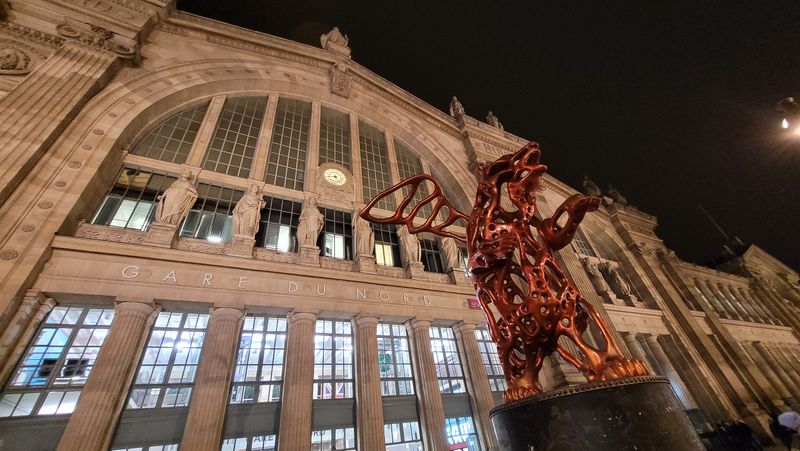
Gare du Nord, one of Paris’s busiest stations, is a gateway to Europe. Its facade, adorned with statues representing the cities it serves, tells a story of connectivity and culture.
Inside, the station is a hive of activity, with travelers heading to various destinations. The grandeur of its design is complemented by the hustle and bustle of everyday life.
As you stand under its historic roof, the blend of architecture and emotion becomes palpable, reminding you that every journey begins with a single step, often from places like Gare du Nord.
6. Kanazawa Station, Kanazawa, Japan
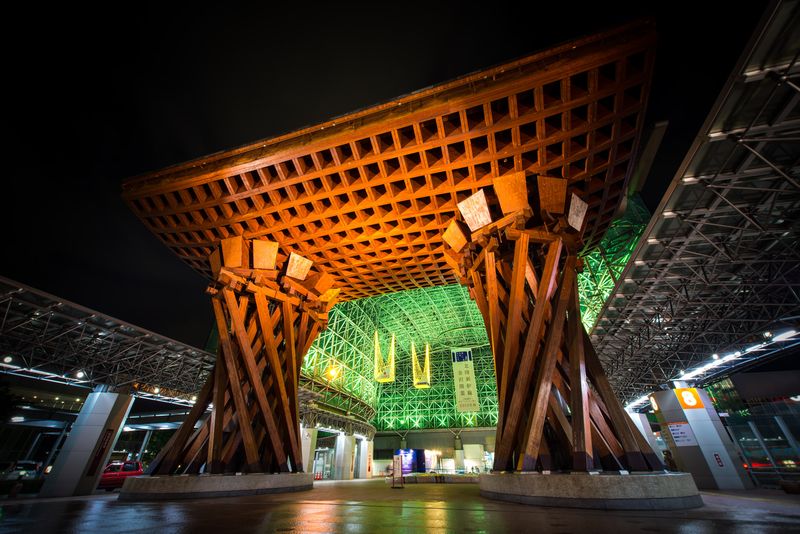
Kanazawa Station is known for its modern yet traditional Tsuzumi Gate entrance, symbolizing a blend of past and future. The fusion of wood and steel creates a visually stunning structure.
Once inside, the station offers a serene atmosphere, contrasting with the bustling city outside. It serves as a gateway to the cultural richness of Kanazawa.
The harmony between design and function is evident, making it not just a transit point, but a destination itself. Each visit is an invitation to explore the cultural tapestry of Japan.
7. Atocha Station, Madrid, Spain
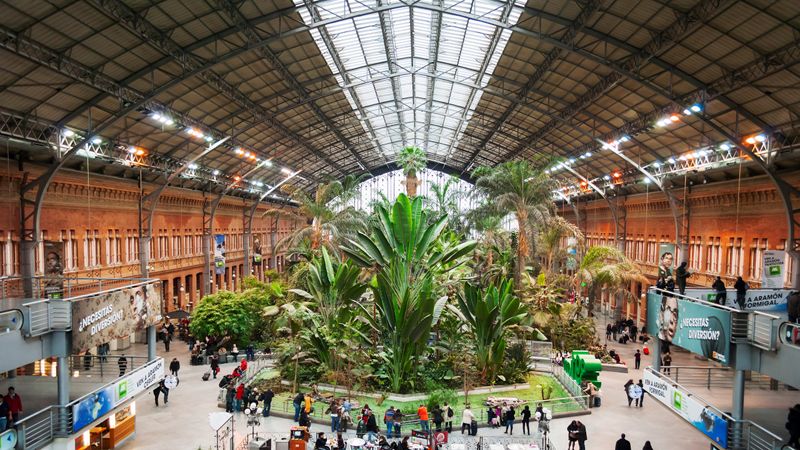
Madrid’s Atocha Station is a botanical oasis nestled within a bustling transport hub. Its tropical garden, filled with lush greenery, offers a serene escape for travelers.
The presence of palm trees and exotic plants creates a tranquil environment, making waiting a delightful experience. It’s a place where nature and architecture coexist harmoniously.
With natural light streaming through the glass ceiling, Atocha Station stands as a testament to innovative design, transforming the ordinary into extraordinary. It invites you to pause and breathe amidst your travels.
8. Helsinki Central Station, Helsinki, Finland
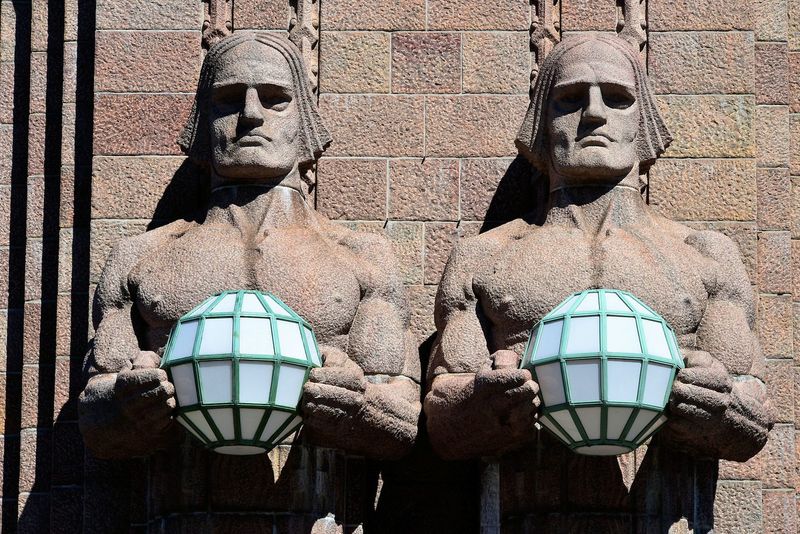
Helsinki Central Station is more than just a transportation hub; it’s a national landmark. Known for its granite facade and iconic stone men statues, it exudes strength and elegance.
The Art Nouveau design reflects Finnish culture and craftsmanship, offering a warm welcome to visitors. Inside, the spacious halls provide a sense of calm and order.
This station is a perfect blend of form and function, where every detail speaks of quality and care. It stands as a gateway to the beauty of Finland, inviting exploration and discovery.
9. São Bento Station, Porto, Portugal
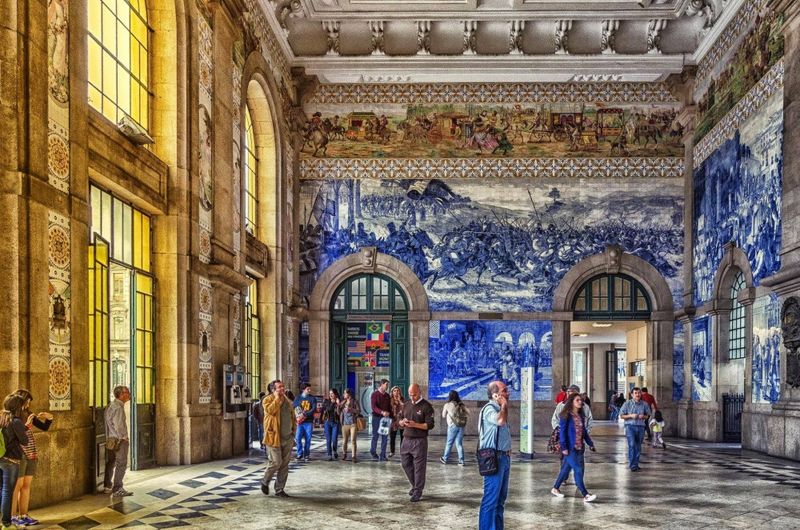
In Porto, São Bento Station is renowned for its exquisite blue and white azulejo tiles. These tiles narrate Portugal’s history through intricate illustrations.
As you enter, the beauty of these tiles captivates, turning the station into an art gallery. The soft natural light enhances their allure, creating a peaceful atmosphere.
Beyond its functionality, São Bento is a cultural monument, reflecting the heart of Portuguese tradition. It’s a place where the past meets the present, offering a unique window into the soul of Porto.
10. Hua Lamphong Station, Bangkok, Thailand

Hua Lamphong Station, a blend of neoclassical and modern Thai architecture, is Bangkok’s gateway to the rest of Thailand. The grand arched roof and intricate details capture the eye.
The station’s interior design echoes a bygone era, with a sense of nostalgia and charm. It’s a place where tradition meets modernity, offering a unique travel experience.
Bustling with life, Hua Lamphong is more than a station; it’s a cultural landmark that embodies the spirit of Thailand. It invites you to embark on new adventures with every journey.
11. Dunedin Railway Station, Dunedin, New Zealand
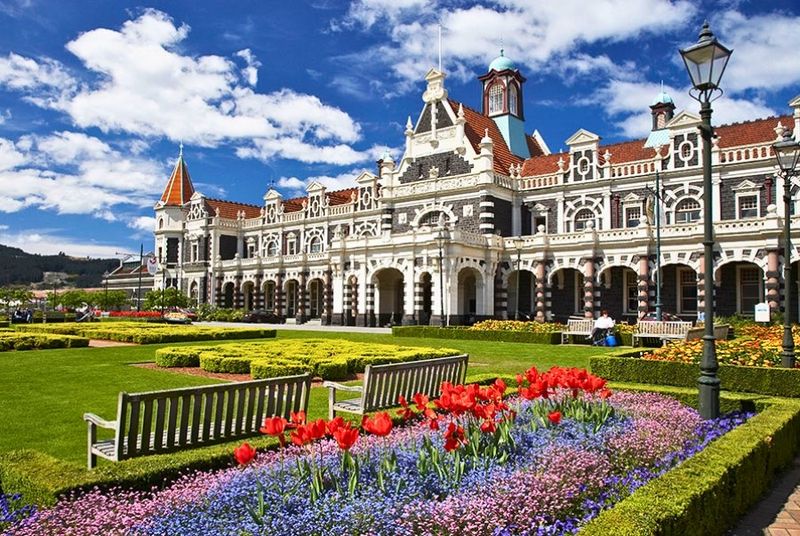
Dunedin Railway Station, a masterpiece of Flemish Renaissance architecture, is often called “Gingerbread George.” Its distinctive design and lush gardens make it a photographer’s delight.
Surrounded by beautifully landscaped gardens, the station’s charm is undeniable. Inside, the mosaic floors and stained glass windows add a touch of elegance.
This station is not just for travel; it’s an experience, a place where history and beauty converge. Dunedin Railway Station stands as a testament to New Zealand’s architectural heritage, inviting exploration and admiration.
12. Liège-Guillemins Station, Liège, Belgium
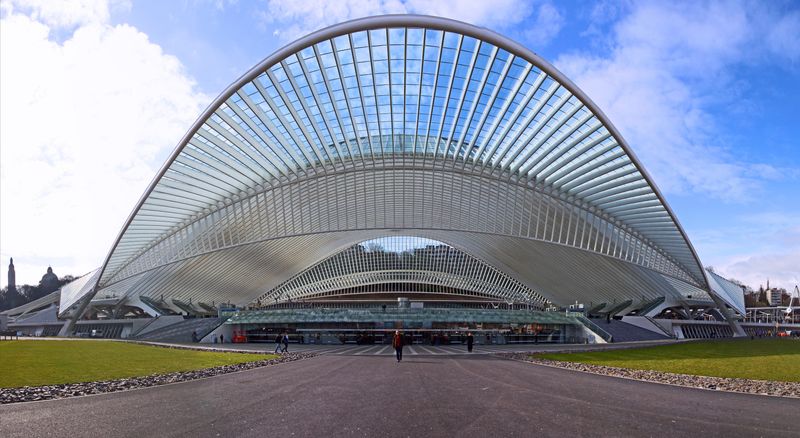
Liège-Guillemins Station, designed by Santiago Calatrava, is a marvel of modern architecture. Its sweeping glass curves create an airy, futuristic ambiance.
The station’s design focuses on openness and light, reflecting a sense of freedom. It’s a place where the future of travel meets the present.
With its innovative structure, Liège-Guillemins is more than a transit point; it’s an architectural icon. The elegance of its design invites admiration and contemplation, offering a glimpse into the future of railway stations.
13. Hauptbahnhof, Berlin, Germany
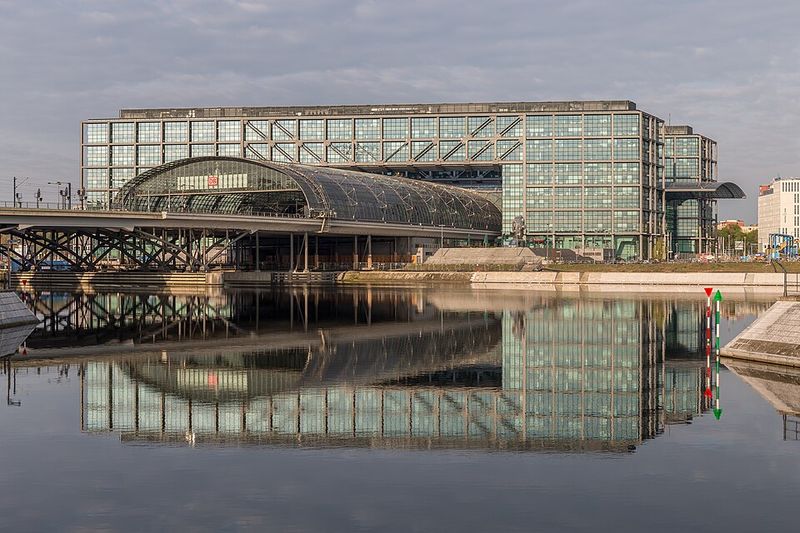
Berlin Hauptbahnhof, Europe’s largest train station, is a marvel of modern engineering. Its glass facade reflects the urban landscape, creating a dynamic interplay of light and movement.
Inside, the multiple levels and open spaces offer a sense of order and accessibility. It’s a hub of connectivity, where the rhythm of travel never ceases.
This station represents Berlin’s embrace of innovation and progress. It’s a place where the energy of the city converges, inviting you to be part of its vibrant tapestry.
14. Milano Centrale, Milan, Italy
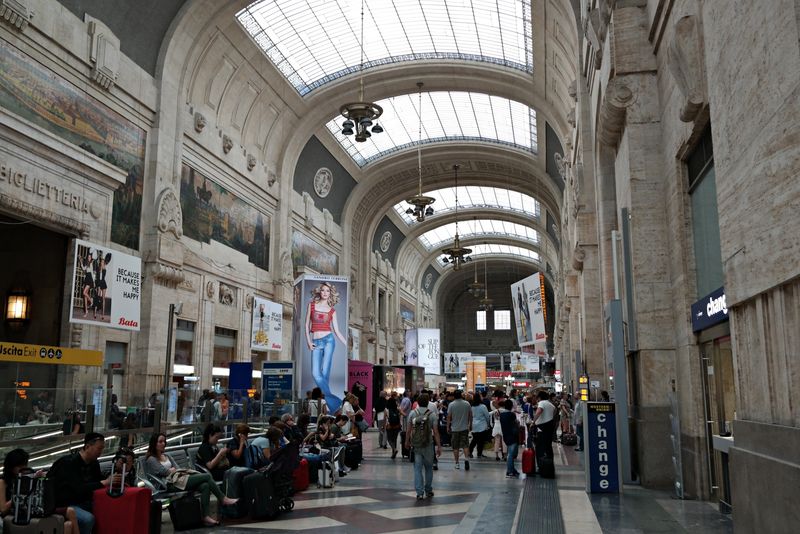
Milano Centrale Station is an Art Deco masterpiece, known for its grandeur and elegance. The station’s entrance hall is adorned with intricate details and soaring ceilings.
Each element of the station reflects Milan’s dedication to art and style, making it a destination in its own right. The blend of design and functionality is seamlessly executed.
As a gateway to Italy’s fashion capital, Milano Centrale embodies the city’s sophistication and dynamism. It’s a place where every journey begins with a touch of Italian flair.
15. Kuala Lumpur Railway Station, Kuala Lumpur, Malaysia
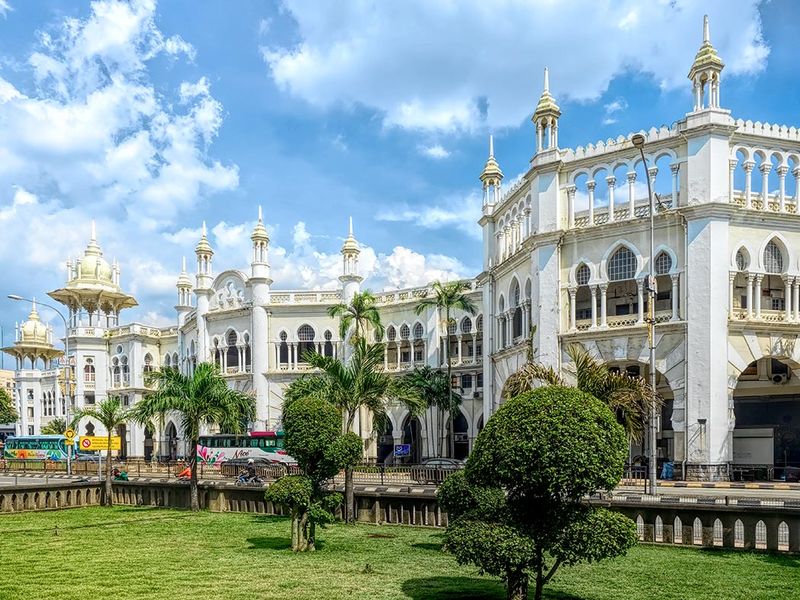
Kuala Lumpur Railway Station is a stunning example of Mughal architecture. Its domed roofs and arched windows create a striking silhouette against the tropical sky.
The station’s design is a blend of Eastern and Western influences, reflecting Malaysia’s diverse cultural heritage. It’s a place where history and modernity coexist.
As you explore its corridors, the beauty of its architecture captivates, offering a glimpse into the past. Kuala Lumpur Railway Station stands as a testament to the city’s rich history and vibrant future.
16. Flinders Street Station, Melbourne, Australia
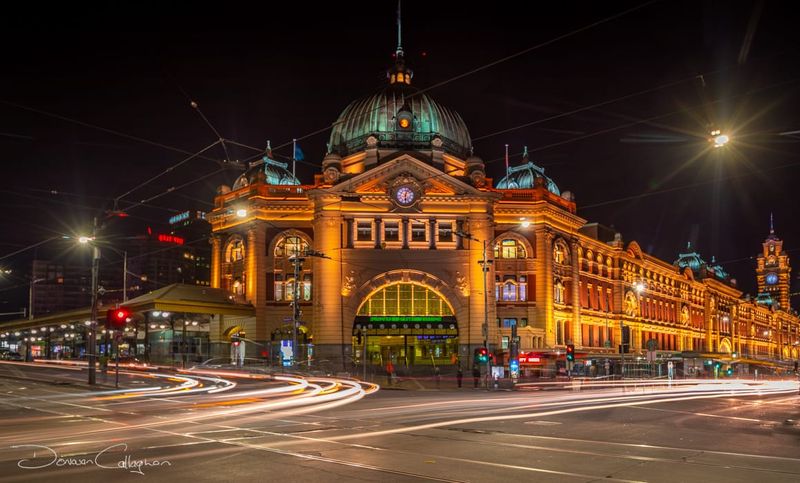
Flinders Street Station, with its domed entrance and iconic clock tower, is a Melbourne landmark. The station’s distinctive design and vibrant atmosphere capture the essence of the city.
It’s a place where city life converges, offering a sense of connection and community. The hustle and bustle of travelers create a lively backdrop.
Flinders Street Station is more than a transit hub; it’s a symbol of Melbourne’s spirit and vitality. Each visit is a chance to experience the city’s dynamic pulse and rich history.
17. Kyoto Station, Kyoto, Japan
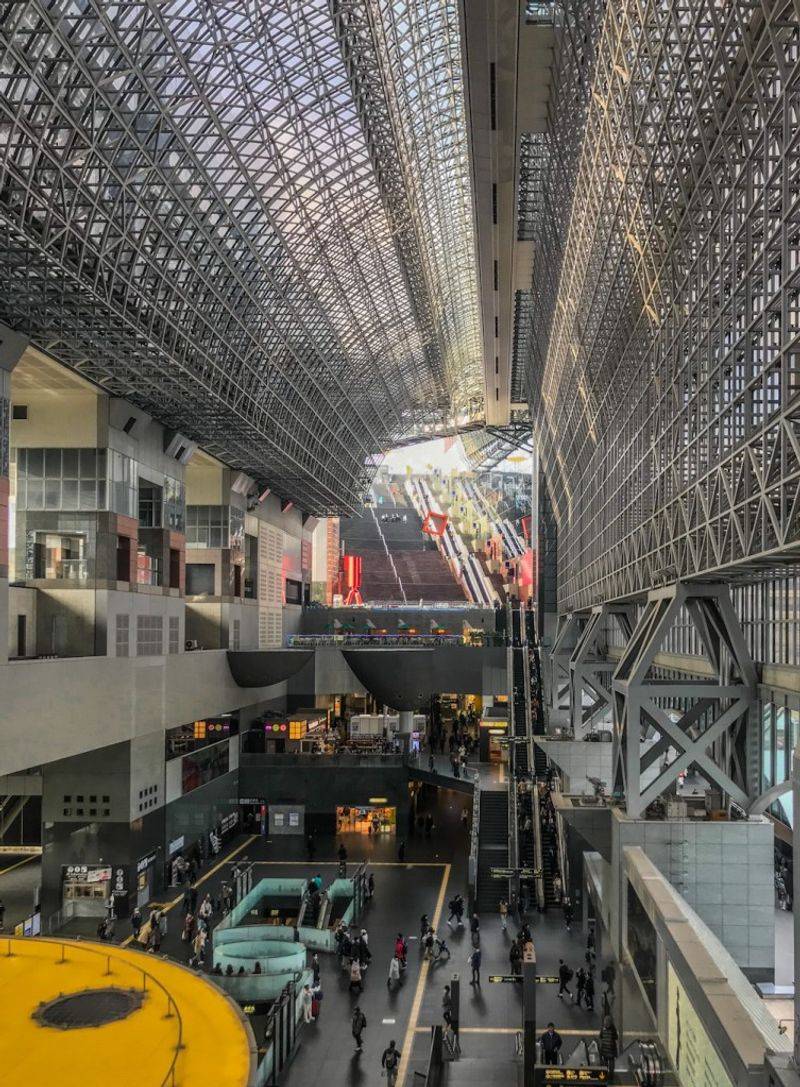
Kyoto Station is a blend of futuristic design and traditional Japanese aesthetics. Its vast open spaces and innovative architecture create a sense of wonder and exploration.
The station serves as a gateway to Kyoto’s cultural treasures, offering glimpses of both the past and future. It’s a place where modernity meets tradition.
As you navigate its corridors, the harmony of design and function becomes evident. Kyoto Station invites you to embark on a journey of discovery, where each step is filled with anticipation.
18. King’s Cross Station, London, UK
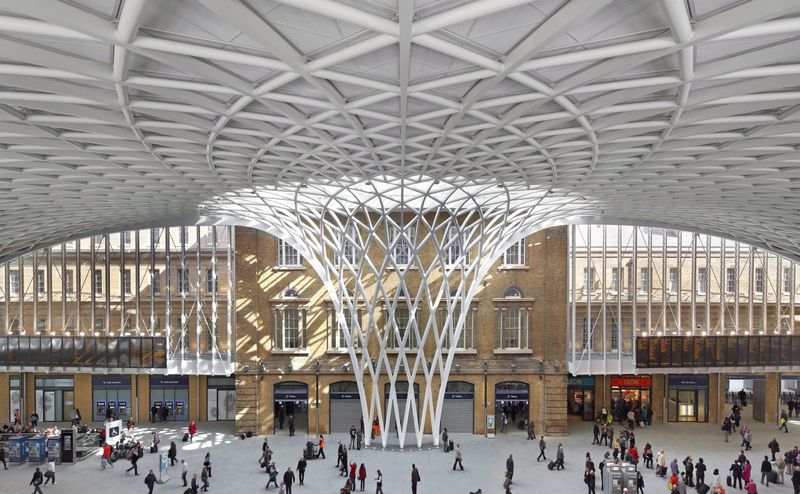
King’s Cross Station, famed for its literary connection to Harry Potter, is a blend of historical and modern design. The station’s lattice roof creates a sense of openness and light.
Beyond its architectural appeal, King’s Cross is a hub of activity, welcoming travelers from around the world. The energy of the station is palpable, with a constant flow of people.
This station is not just a transit point; it’s a cultural icon, symbolizing London’s dynamic spirit. Each visit is an opportunity to be part of its vibrant story.
19. Estação da Luz, São Paulo, Brazil
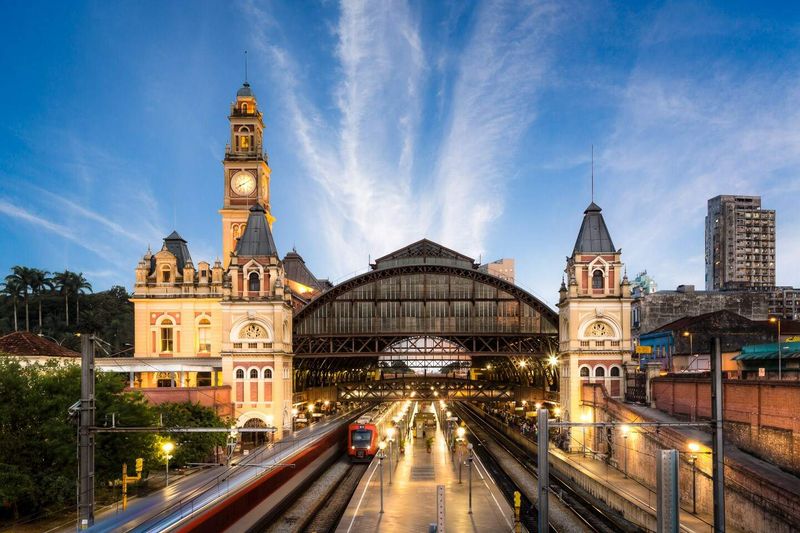
Estação da Luz, an architectural gem in São Paulo, blends British design with Brazilian flair. The station’s elegant facade and lush gardens create a welcoming atmosphere.
Inside, the station is a hub of activity, reflecting the city’s vibrant culture. The interplay of light and space invites exploration and admiration.
Estação da Luz is more than a railway station; it’s a cultural landmark that embodies São Paulo’s energy and diversity. It stands as a testament to the city’s rich history and bright future.
20. Haydarpasa Terminal, Istanbul, Turkey
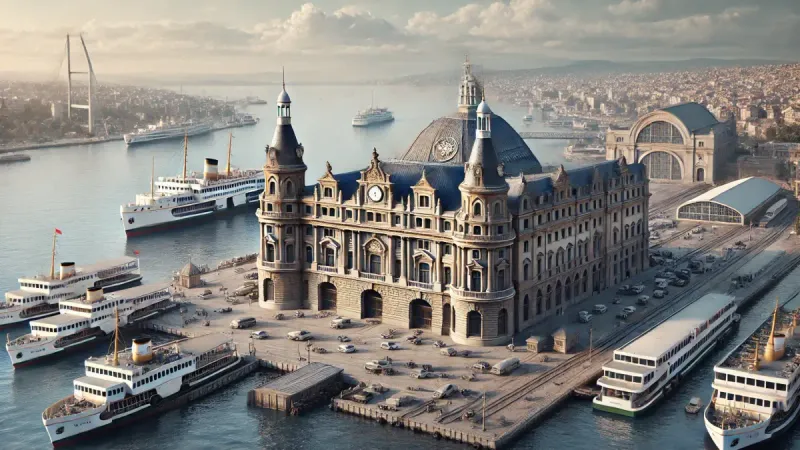
Nestled along the Bosphorus Strait, Haydarpasa Terminal in Istanbul greets travelers with its grandeur. Its neoclassical architecture, a blend of Eastern and Western influences, stands as a testament to the city’s rich history. The station’s ornate facades and soaring towers are a visual feast.
Inside, intricate tile work and high, arched ceilings capture the bustling spirit of Istanbul. Commuters move through its halls, a blend of cultures and languages.
Serving as a gateway between Europe and Asia, Haydarpasa is more than just a transit point—it’s a symbol of connection and a piece of living history.
Fun Fact: Opened in 1908, Haydarpasa has witnessed the city’s transformation over more than a century.

